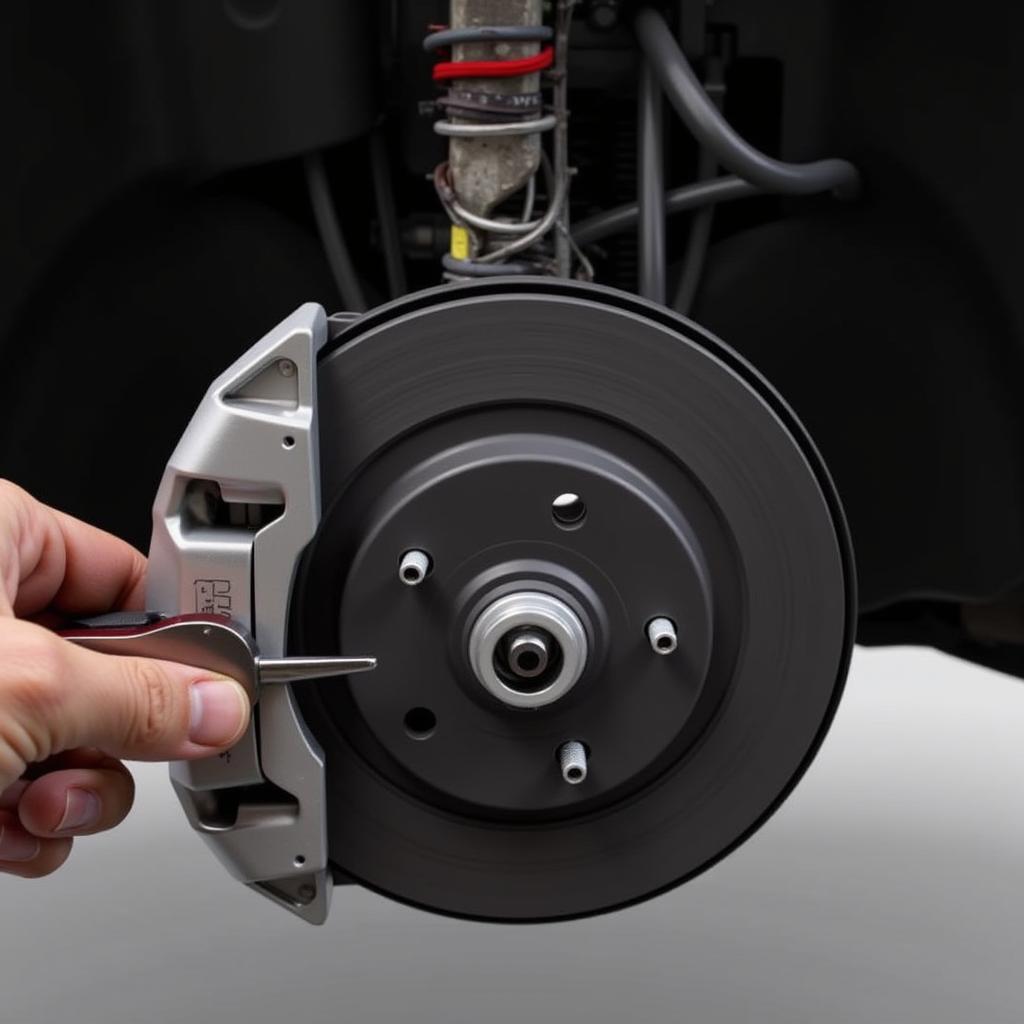A short circuit in your car’s electrical system can be a frustrating and potentially dangerous problem. Knowing How To Find And Fix A Short In Car Wiring is essential for any car owner or mechanic. This guide provides a step-by-step approach to diagnosing and repairing these electrical gremlins, empowering you to tackle the issue head-on.
Understanding Car Wiring Shorts
A short circuit occurs when a positive wire comes into contact with a negative wire or ground, bypassing the intended circuit. This creates a low-resistance path for electricity, leading to a surge in current. This surge can cause blown fuses, damaged components, and even fires. Identifying and fixing these shorts requires a systematic approach. Sometimes, you might find yourself needing to know how to fix a car horn that is stuck, which can also be related to wiring issues.
Identifying the Symptoms of a Short
Several signs indicate a potential short circuit:
- Blown fuses: A frequently blown fuse is a classic symptom.
- Dim or flickering lights: Lights dimming or flickering, especially when another electrical component is activated, suggest a short.
- Burning smell: The smell of burning plastic or insulation indicates overheating wires due to a short.
- Non-functional components: If a specific component suddenly stops working, a short might be the culprit.
- Overheating wires: Touch the wires carefully (when the car is off) to feel for excessive heat.
Tools You’ll Need
Before diving into the diagnostic process, gather the necessary tools:
- Multimeter: Essential for testing voltage and resistance.
- Test light: A simpler alternative to a multimeter for checking circuit continuity.
- Wire strippers/cutters: For repairing damaged wires.
- Electrical tape: To insulate repaired wires.
- Fuse puller: For safely removing fuses.
- Protective gloves and eyewear: Safety first!
How to Find a Short in Car Wiring
Finding the short itself is the most challenging part. Here’s a methodical approach:
- Check the fuses: Identify the blown fuse. This indicates the affected circuit.
- Inspect the wiring diagram: Consult your car’s wiring diagram to understand the components in the affected circuit.
- Visually inspect the wiring: Carefully examine the wiring along the affected circuit, looking for damaged insulation, exposed wires, or loose connections. Even a small nick in the insulation can cause a short.
- Isolate the short: Disconnect components one by one along the circuit while checking for continuity with a multimeter or test light. This helps pinpoint the location of the short. If you are having trouble with your car seats, knowing how to fix car seat electronic can be a valuable resource.
- Use a test light or multimeter: With the power off, use a test light or multimeter to check for continuity between the positive and negative wires in the suspected area. A reading indicates a short.
Fixing the Short
Once you’ve located the short, the fix is usually straightforward:
- Repair or replace the damaged wire: If the wire is simply damaged, repair the insulation with electrical tape. If the damage is extensive, replace the entire wire section.
- Secure loose connections: Tighten any loose connections or replace damaged connectors.
- Replace the fuse: Install a new fuse of the correct amperage.
“A common mistake people make is using a higher amperage fuse than recommended. This can lead to further damage and even fire,” advises John Davies, Senior Automotive Electrical Engineer at Apex Automotive Solutions.
Preventing Future Shorts
Prevention is always better than cure. Here’s how to minimize the risk of future shorts:
- Regular inspections: Periodically inspect your car’s wiring for signs of wear and tear.
- Proper wiring installation: When installing any new electrical components, ensure proper wiring and secure connections. Don’t overload circuits. You may also consider fixing water damaged car as water damage can lead to short circuits.
- Protect wiring from heat and abrasion: Route wires away from hot engine components and sharp edges. Use protective loom or tubing where necessary. For instance, knowing the cost to fix a car door locking mechanism can help you budget for potential wiring repairs within the door.
“Investing a little time in preventative maintenance can save you a lot of headaches down the road,” adds Maria Sanchez, Lead Technician at Auto Electric Experts.
Conclusion
Finding and fixing a short in car wiring can seem daunting, but by following these steps, you can effectively diagnose and resolve the issue. Remember to always prioritize safety and consult your car’s wiring diagram. If you’re unsure about any step, it’s always best to consult a qualified automotive electrician. For expert advice and assistance, feel free to connect with us at AutoTipPro.
If you have issues with your car lighter, knowing how to fix car lighter fuse can be a great starting point. Contact us at +1 (641) 206-8880 or visit our office at 500 N St Mary’s St, San Antonio, TX 78205, United States. We are always ready to help.





Leave a Reply